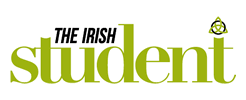Hairdressers cut and style hair to enhance the personal appearance and confidence of clients. Some salons cater for all clients, while others specialise in particular styles and clients. African-Caribbean hairdressing techniques include pressing, braiding, plaiting and attaching hair extensions. Traditional male barber services may include trimming beards, moustaches, ear and nostril hair.
The work can involve:
- advising clients tactfully on styles that suit their hair type and lifestyle
- shampooing and conditioning hair, possibly offering additional extras, such as a head massage
- trimming, cutting, layering or thinning hair
- perming, colouring or bleaching using chemicals including ammonia and peroxide
- curling or straightening using heated tongs
- blow-drying and styling
- diagnosing hair and scalp problems
- applying gel, mousse, wax or spray
- putting hair up, setting and accessorising hair for special occasions
- sweeping the floor and preparing towels and other equipment.
Before starting on any hair treatment, a hairdresser will discuss with the client ideas for styling. If using chemical products, hairdressers may need to conduct a small skin test to check there is no allergic reaction.
New trainees usually start off greeting customers, washing towels and replenishing stock items, washing hair, keeping the salon clean and tidy and observing the qualified stylists. Eventually they may start to practise on mannequins and then on client models.
Typically, juniors in smaller salons cover reception duties, booking appointments and handling money, while senior stylists and salon owners are responsible for local marketing activities, recruitment, training, ordering salon supplies and cashing up.
Hours and environment
Hairdressers generally work 40 hours a week, normally including Saturday, with a weekday off. Many salons also open late one or two evenings a week. Some open on Sunday. Part-time work is often available.
Hairdressers can be salon based or mobile, travelling to clients’ homes or hospitals and care homes. A driving licence is essential if visiting clients.
Most of a hairdresser’s day involves standing for long periods. Some bending may be required to cut hair. They may be able to sit on a stool while working.
Chemical treatments may affect those with sensitive skin, allergies or asthma.
Salary and other benefits
These figures are only a guide, as actual rates of pay may vary, depending on the employer and where people live.
- A junior hairdresser is likely to earn the national minimum wage, which ranges from around €15,000 to around €18,000 a year, depending on age and hours worked.
- Qualified hairdressers/stylists/barbers may earn around €22,500 to €30,000 a year.
- At the top of the profession, hairdressers may earn €40,000 or more.
Tips are likely to increase earnings.
Skills and personal qualities
Hairdressers should have:
- good listening ability to interpret clients’ requests
- the ability to work quickly and accurately with their hands
- an element of creativity and artistic sense
- an eye for colour and form
- the ability to chat with clients in an easy manner
- a caring, positive attitude
- a smart personal appearance and good personal hygiene
- punctuality and the ability to stay calm when under pressure
- stamina, as they are on their feet for most of the day
- a willingness to learn new techniques and keep their skills up to date
- an awareness of health and safety issues.
Interests
It helps to have an interest in:
- fashion and hair trends
- working with people
- the application and effects of new hair products.
Entry routes
The main routes into hairdressing are:
- applying to a salon as a trainee/junior, learning on the job and attending college on day release
- doing a full-time or part-time college course – it is important to make sure that the course leads to a recognised qualification
- via an Apprenticeship.
Useful Links:
National Hairdressing Apprenticeship
The Irish Hairdressers Federation
Apprenticeships Northern Ireland
